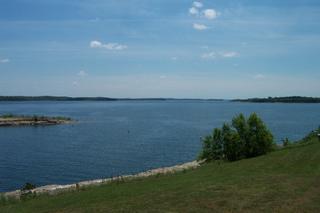FOR MANY OF US, if we are not sick, our physical comfort lulls us into a false sense of security and we take our well-being for granted. If life could be bought, everybody would hoard it. People would give up everything, including their money, for a guarantee of life. It is possible for life span to be lengthened - but not eliminated. Perhaps it is not so much adding years to life - but rather adding life to years - which should draw our attention. Maybe we should focus more on a zestful life, and living life "at the top of the hill." Perhaps we should think more about the
quality of life which we are given, and not so much on the number of years, months, weeks, and days we might live.
Many of us think of health only as an absence of illness. But, it is much more than that. It is a state of being which extends way beyond just "feeling good." Good health is being free from disease, infection, and disability. But, it is also being physically, mentally, emotionally, morally, socially, and spiritually fit!
Sound health needs no defense - beyond a reminder that without it, freedom, fame, and funds are hollow. We all realize that our desires for happiness are increased when we are free of aches and pains. Poor health brings on depression and worry, which in turn accelerate the degenerative process.
Not only do we enjoy our leisure more when we are healthy, but we are actually healthier when we enjoy our leisure.The best answer to the problems of poor health is in doing our best to reach a state of total health and fitness, and then to keep it! Here is where leisure can play a role in
prevention: keeping people from becoming sick, or injuring themselves, in the first place. Leisure can also play a
remedial role by assisting people in getting well after they have become ill. Everyone ought to have the opportunity for decent, satisfying, and creative use of their leisure.
Hospitals use wholesome recreation activities in the treatment of the ill and the handicapped. Penal institutions use recreation in an attempt to rehabilitate prisoners. Psychologists use play therapy with people of all ages. Industries find leisure activities useful in recruiting personnel and in building morale within the company.
The wholesome use of leisure is, by all means, therapeutic. And, it makes a distinct contribution to the health and well-being of individuals - and ultimately, to the nation.
__________
Adapted from thoughts by Charles Brightbill


